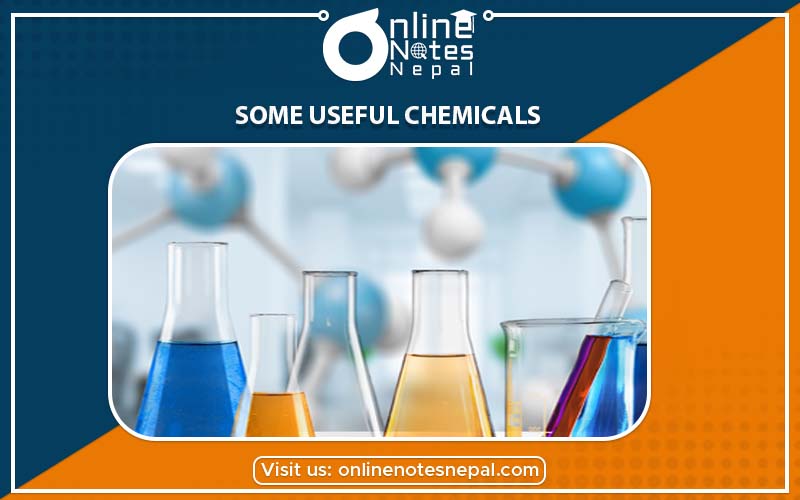Published by: BhumiRaj Timalsina
Published date: 25 Jan 2022

Various types of chemicals are used in our daily life activities. Some chemicals are useful and some chemicals are harmful. In this lesson, we study about some useful chemicals that are used in our daily life. Some of the examples of useful chemical substances are phenol, dettol, plastics, detergent, chemical fertilizers, different medicines, etc. We use these substances to do our various activities. Like, we use dettol to make our skin germ free, soap for bathing, detergent for washing clothes, etc. We use medicines to cure our diseases. We use chemical fertilizers to increase the fertility of the soil and increase the crop yield. We use various types of chemical substances to perform various activities. Some of the commonly used chemical substances are described below,
Phenol is also known as carbolic acid. It is an aromatic organic compound. The molecular formula of phenol is C6H5OH. It is a white crystalline solid that is volatile. It is one of the useful chemicals. Phenol was discovered by Friedlieb Ferdinand Runge in 1834 AD. It was first extracted from coal tar but nowadays it is extracted from petroleum in a large amount. Phenol is an organic compound. It is appreciably soluble in water. It should be handled properly as it is corrosive to the eyes, skin and respiratory tract. Phenol is used for various purpose. Some of the uses of phenol are discussed below,
Dettol is one of the important chemical used as medicine. It is used for cleaning cuts and wounds. It was manufactured by Reckitt Benckiser. Dettol has been in use since before 1936. Before, it was used an antiseptic after surgery. Dettol is toxic to many animals, especially cats. It is also harmful to humans. It is poisonous when ingested and inhaled. A 42-year-old British man died from Dettol overexposure in May 2007. Dettol is used for many purposes. Some of the uses of dettol are discussed below,
A detergent is a surfactant or the mixture of surfactant that has cleansing properties. Chemically, the detergent is known as alkylbenzenesuphonate. Detergents are similar to the soap but they are more soluble in hard water. They are also called soapless soaps. They give stronger cleansing action than soap. Detergent also works in acidic water. Detergent is petrochemical that is prepared from petroleum products. They are commonly available as powders or concentrated solutions. Detergents are non- biodegradable. It causes soil pollution and water pollution. They are highly basic and are harmful to human skin. They also affect plants. Detergent also contains various other chemicals like bleach, surfactants, enzymes,water softeners, brighteners, and fragrances. Some of the uses of detergent are discussed below,
A chemical fertilizers are the chemical substances applied to the soil or the plants directly for the proper growth and the development of the plants. It can also be defined as the chemical substances by use of which we can increase the fertility of the soil or increase crop yield. They contain the necessary nutrients and minerals needed for the proper growth and development of plants. Due to the constant use of land fo growing crops, the fertility of the lands goes on decreasing or decline which affects the crop yield. In such case, we use chemical fertilizers to increase the fertility of the land and the crop yield. There are two types of chemical fertilizers. They are organic fertilizers and chemical fertilizers. Chemical fertilizers are manufactured in industries by humans using an artificial method. It contains enough nutrients needed for plants. Organic fertilizers are the natural fertilizers that are obtained from the decomposition of animal remains, poultry droppings, and dead plants. They do not contain the enough nutrients needed for plants. Chemical fertilizers pollute the environment whereas organic fertilizers do not pollute the environment.
Usually, for proper growth and development, plant require nitrogen, phosphorus, and potassium. Chemical fertilizers are made by mixing compound that contains nitrogen, phosphorus, and potassium. The main aim of chemical fertilizers is to supply the enough minerals like nitrogen, phosphorus, and potassium to the plants. Chemical fertilizers should be used in limits, if they are used in excessive amount then it can affect the fertility of the soil and destroy the crops. The main elements needed for the proper growth and development of the plants are discussed below,